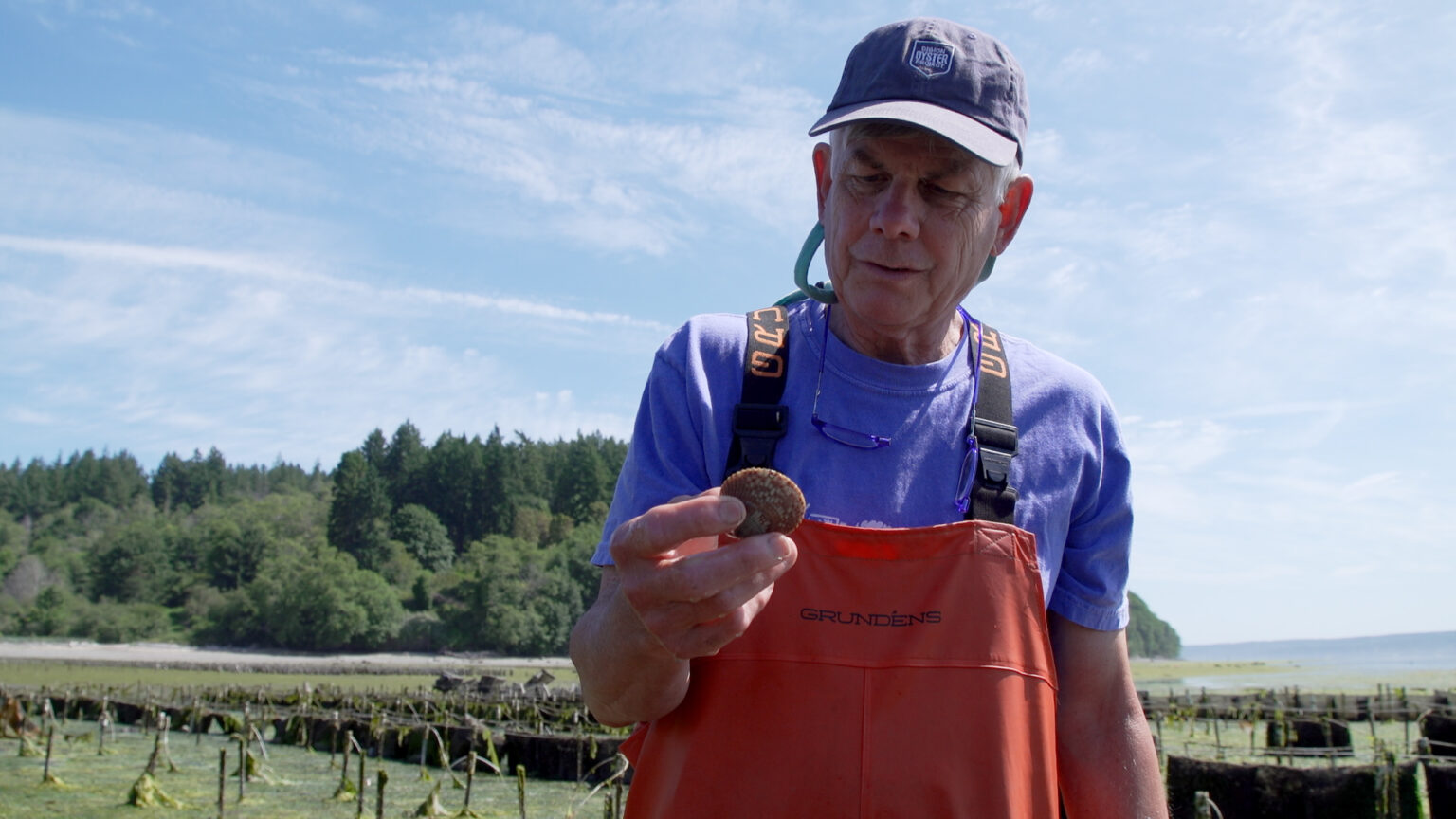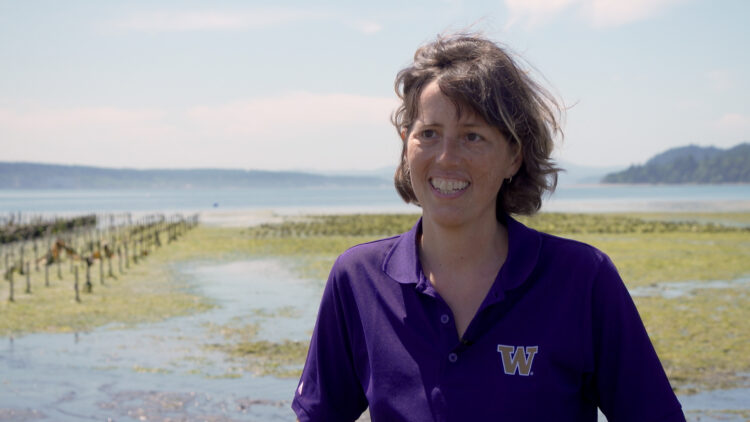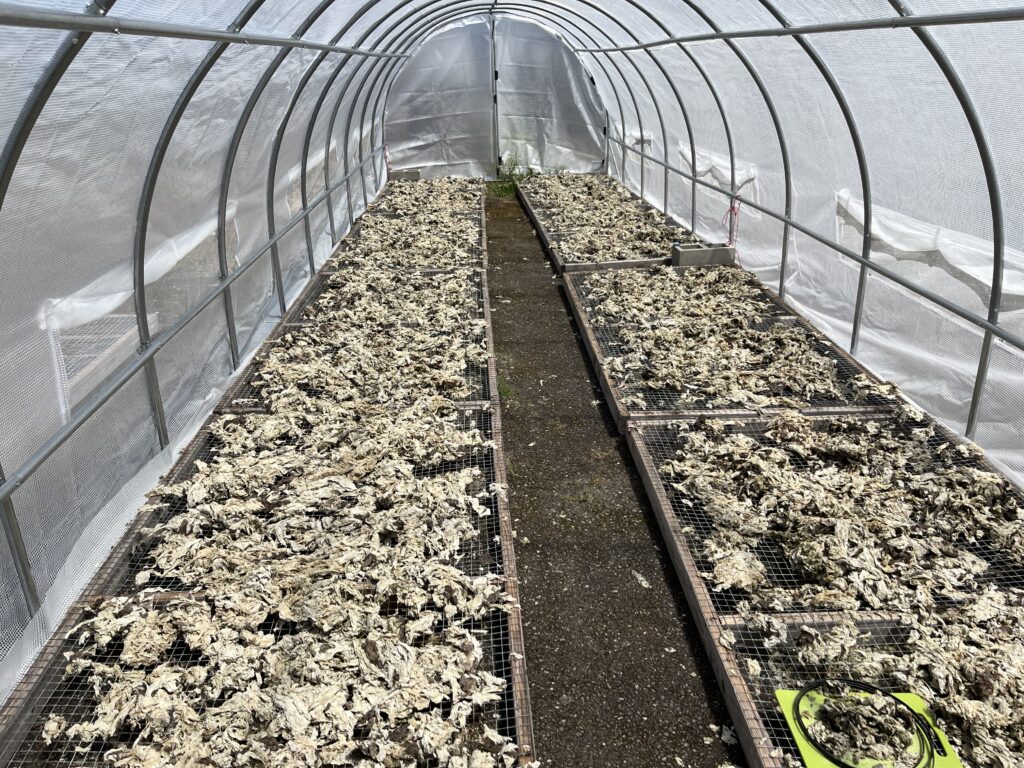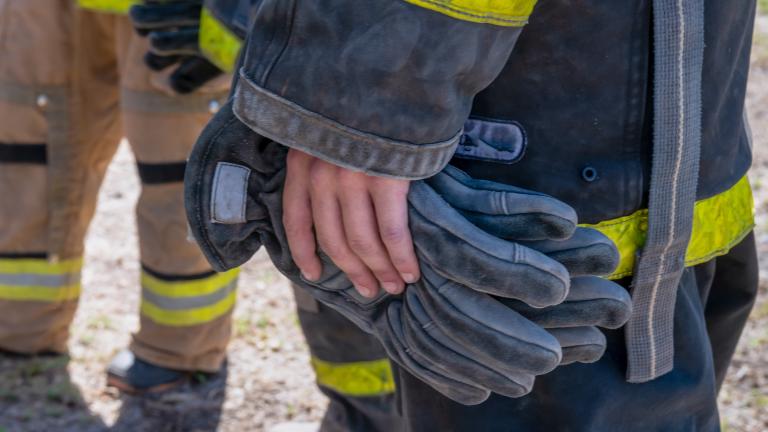Joth Davis adjusted his waders and stepped into the cool waters of Thorndyke Bay, his Crocs disappearing under a layer of thick, forest-green seaweed. Behind him, jagged Olympic peaks poked above the hilltops. Before him stretched 30 acres of oysters, clams and geoducks — the shellfish farm he’d run for 35 years.

A hundred feet from shore, Davis stooped over and reached a hand toward the muck, where a native cockle clam sat on the surface. “This right here,” he said, scooping up the clam, “this is the problem.”
Under ideal conditions, cockles bury themselves in sand or mud, resting in shallow waters. But the conditions at Baywater Shellfish are not always ideal. Every summer, Davis and shellfish farmers across the Washington coastline contend with an abundance of Ulva, a native seaweed that flourishes in tidelands. Commonly called “sea lettuce,” Ulva grows thick and heavy. Left unmitigated, it can smother life underneath.
Some shellfish, like the cockle in Davis’s hand, can force themselves through the sludge and onto the surface, where they’re more likely to survive. Others — including the oysters and geoducks that are the heart of Baywater’s business — can only suffer on the seabed.
“Too much seaweed grows in proliferation, and just piles up on top of the (shellfish). We definitely have seen mortalities among geoducks because of the Ulva,” said Davis, who is also a trained marine biologist and affiliate professor of aquatic and fisheries sciences at the UW. “And it’s getting worse.”

For years, Baywater has removed excess Ulva by hand. Teams of workers hunch over to scoop fistfuls of seaweed into oversized buckets. It’s an expensive, time-consuming, laborious process that creates yet another conundrum — what to do with hundreds of pounds of unwanted seaweed.
Researchers at the University of Washington saw an opportunity. Ulva is rich in carbon and other nutrients, which can cause problems when left in the sea. But those same nutrients are vital for land-based agriculture. What if shellfish farmers like Davis could turn all that extra seaweed into an organic soil amendment for vegetable farms?
“It seemed like a real no-brainer,” said Sarah Collier, a UW assistant professor of environmental and occupational health sciences and the project lead. “What has been a problem for shellfish farms could be a great opportunity for farms on land.”
That insight led to Blue Carbon, Green Fields, a multi-year collaboration between the UW, Baywater Shellfish, Puget Sound Restoration Fund, Washington Sea Grant, Washington State University, and farm business incubator Viva Farms. The project aimed to test the viability of Ulva as a soil amendment, and, if successful, develop a market for sea-based farmers to sell excess seaweed to their counterparts on land. Along the way, Collier’s team would study the supply chain’s agricultural, economic and climate impacts.
Project leaders hoped their findings would help to solve a problem faced not only in Washington, but also in coastal communities around the globe.

“Our farm is really a research platform,” Davis said. “We’re doing this because it helps the farm, but it’s really the science that we want.”
In December 2023, the U.S. Department of Agriculture awarded the program nearly $5 million over five years. The project launched the following year, removing more than 17,000 pounds of seaweed from shellfish beds and applying it to crops on four local farms, who received financial support for their participation.
The project generated widespread excitement. Anecdotes from participating farms suggested an increased crop yield, and nearly 70 farms expressed interest in participating in the second year. The project team built a prototype raft-based system to accelerate seaweed removal. Early data suggested a significant economic benefit.
Then the USDA pulled the plug. In April 2025, federal officials canceled Partnerships for Climate-Smart Commodities, a $3 billion initiative to fund climate-forward agricultural projects such as Blue Carbon, Green Fields.
“We had to immediately shut everything down,” Collier said. Now the project is at a standstill: Farmers who had been eager to participate were unable to do so, and researchers haven’t been able to fully analyze the first year’s data. The raft-based harvester sits ready, but has no supply chain for the seaweed it collects.
As the summer unfolds, project leaders have scrambled to maintain what they can, collecting essential data and storing seaweed samples for later analysis. Collier is searching for alternative funding and working with the USDA to potentially tweak the project to fit the Trump administration’s priorities.
For now, though, a solution to the seaweed problem remains just out of reach.
“The thing that’s really frustrating is that this is absolutely a win-win,” Collier said. “It makes sense. It solves a problem. It’s just something that makes sense from every perspective whether you’re thinking about the economics, the environmental impacts or building resilience and health in the system. It just makes sense from every possible angle.
“So to have to stop doing this work is just so frustrating.”
Adapted from the original post here.



